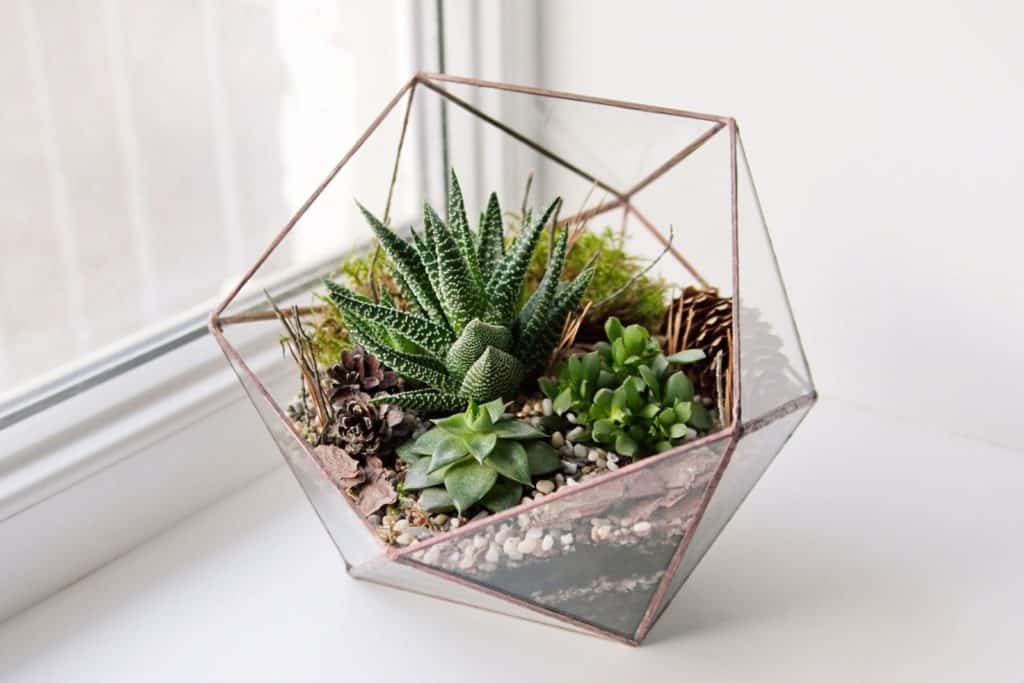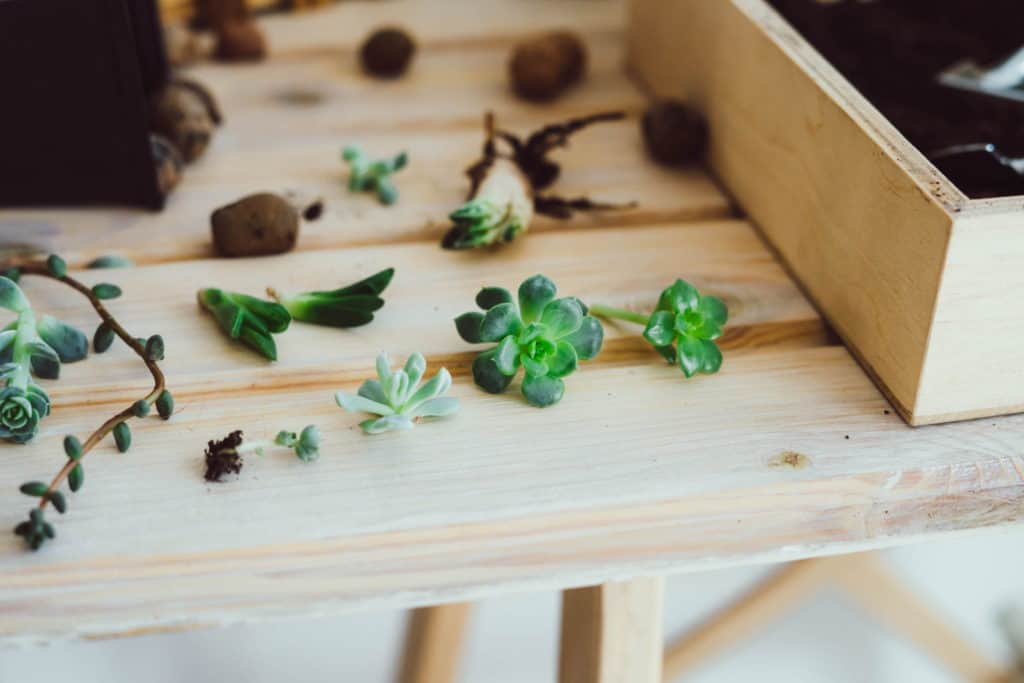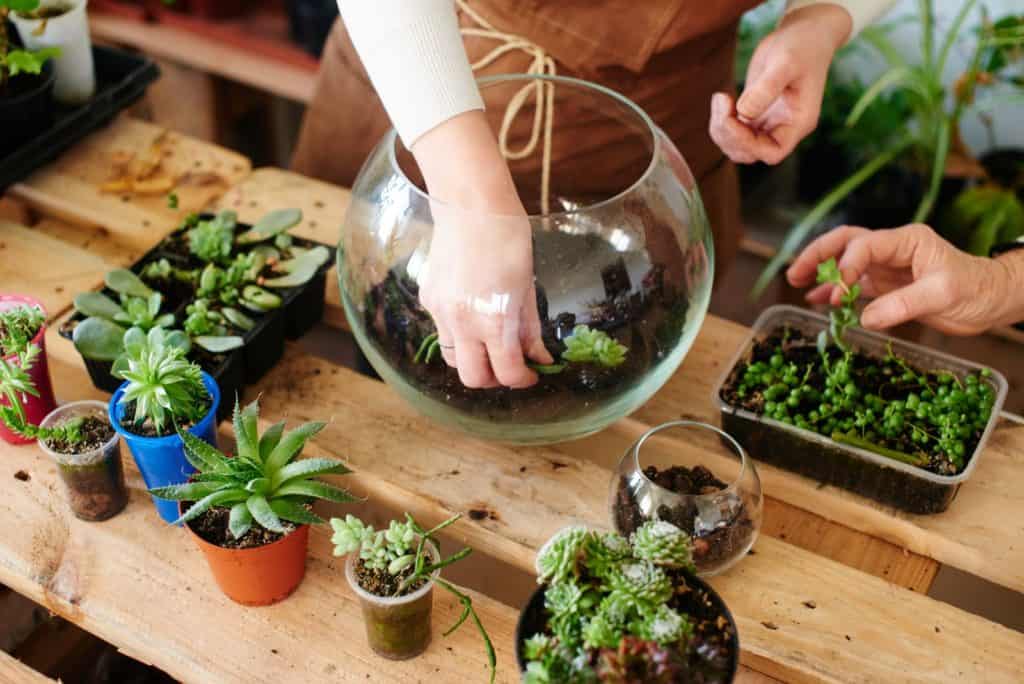Succulent Terrariums: The Modern Way to Display Your Plants
Succulents are super cool houseplants. They hold a lot of water in their thick leaves and stems, so they’re pretty easy to take care of. But sometimes, regular pots don’t let these awesome plants stand out enough. That’s where terrariums come in!
By planting succulents in a glass container like a bowl or vase, you can show them off in a fresh, modern way. Terrariums make your succulents into eye-catching displays that are hard to miss. This blog post explains how to make your own succulent terrarium and keep it healthy.

Contents
What Succulents Work Best?
When choosing succulents for your terrarium, look for small, slow-growing varieties. The compact size lets you fit more varieties together in the limited space. Some top mini succulent choices include:
- Echeverias – These rosette-forming plants come in many colors like green, purple, red and blue-green. Varieties like Echeveria ‘Lola’ and E. elegans stay under 6 inches across.
- Sempervivums (Hens and Chicks) – The geometric rosette patterns and different colored “chicks” make these very eye-catching. Sempervivum calcareum and S. tectorum work well.
- Crassulas – From bright green-yellow to red-tipped varieties, these easy-care succulents have tons of interest. Popular mini types include Crassula ovata ‘Gollum’ and C. perforata string-of-buttons.
- Sedums – Low-growing sedum varieties add textural appeal with their plump, trailing stems and leaves. Sedum dasyphyllum, S. rubrotinctum and S. nevii all stay compact.
- Haworthias – With raised white stripes or bumps, these miniature succulents have unique geometric looks. Haworthia cooperi and H. cymbiformis max out around 4 inches tall.
Feel free to mix and match a variety of shapes, colors and textures for an eye-catching arrangement. Just make sure they all have similar light and water needs. Most succulents enjoy bright, indirect light and infrequent watering once the soil is fully dried out.

Open or Closed Terrarium?
Succulents need some air flow, so closed glass bottles or jars won’t work well long-term. The high humidity inside will quickly rot the plants. It’s better to use open bowls, vases or even hanging glass globes with a hole at the top.
The opening lets excess moisture evaporate while still showing off your succulents. Square glass containers work nicely too, as long as they’re open at the top or have vents on the sides.
Getting the Right Soil
Soil is super important for healthy succulent growth in a terrarium. These plants like a loose, well-draining mix that can dry out completely between waterings. Regular potting soil holds too much moisture.
Your best bet is to use a premixed “cactus and succulent” soil from the garden store. These gritty blends have just the right texture and nutrients for succulents. One great option is Bonsai Jack’s Succulent and Cactus Soil Gritty Mix #111.
- Fast-draining and nurturing
- Optimized for pH of 5.5, ideal for acid-loving plants
- Pathogen free with extended pathogen control
- Contains Bonsai Block, Monto Clay, and Pine Coir (pine fines) is a soil mix optimized for plants that require dryer feet between watering
- All Bonsai Jack soil products are lab-tested and manufactured to spec versus other brands that use ingredients derived from reclaimed organic matter containing pathogens such as nematodes and insects that can damage or kill plants
Some succulents, like air plants (Tillandsias), don’t even need any soil at all! You can simply set these epiphytes right into the glass terrarium with no dirt.
How to Plant Your Succulent Terrarium
Making your own succulent terrarium is easy! Here are the basic steps:
- Start with a layer of clay pebbles or perlite in the bottom 1-2 inches for drainage.
- Add a 3-4 inch layer of cactus/succulent potting mix on top.
- Gently remove your succulent plants from their old pots, brushing off excess dirt.
- Arrange the succulents in the terrarium, placing them about 1-2 inches apart.
- Fill in gaps around the plants with more cactus soil, pressing it down lightly.
- Add any decorative touches like colored sand, rocks or figurines if desired.
That’s it! Just be sure to wear gloves if handling prickly cactus varieties.

Succulent Terrarium Care Tips
After planting, wait about a week before giving your new terrarium its first drink of water. The succulents need time to recover from being replanted.
From then on, only water when the soil is completely dry – maybe every 2-3 weeks. Use filtered water or let tap water sit overnight before using. Too much moisture will cause rot.
Bright, indirect light is ideal for most indoor terrariums. Avoid direct sun which can overheat the glass. A spot near an open window with airflow is perfect.
Fertilizer isn’t necessary but you can give weak cactus fertilizer once per year if desired. With proper soil, light and water, your succulents will thrive in their stylish new terrarium home!

